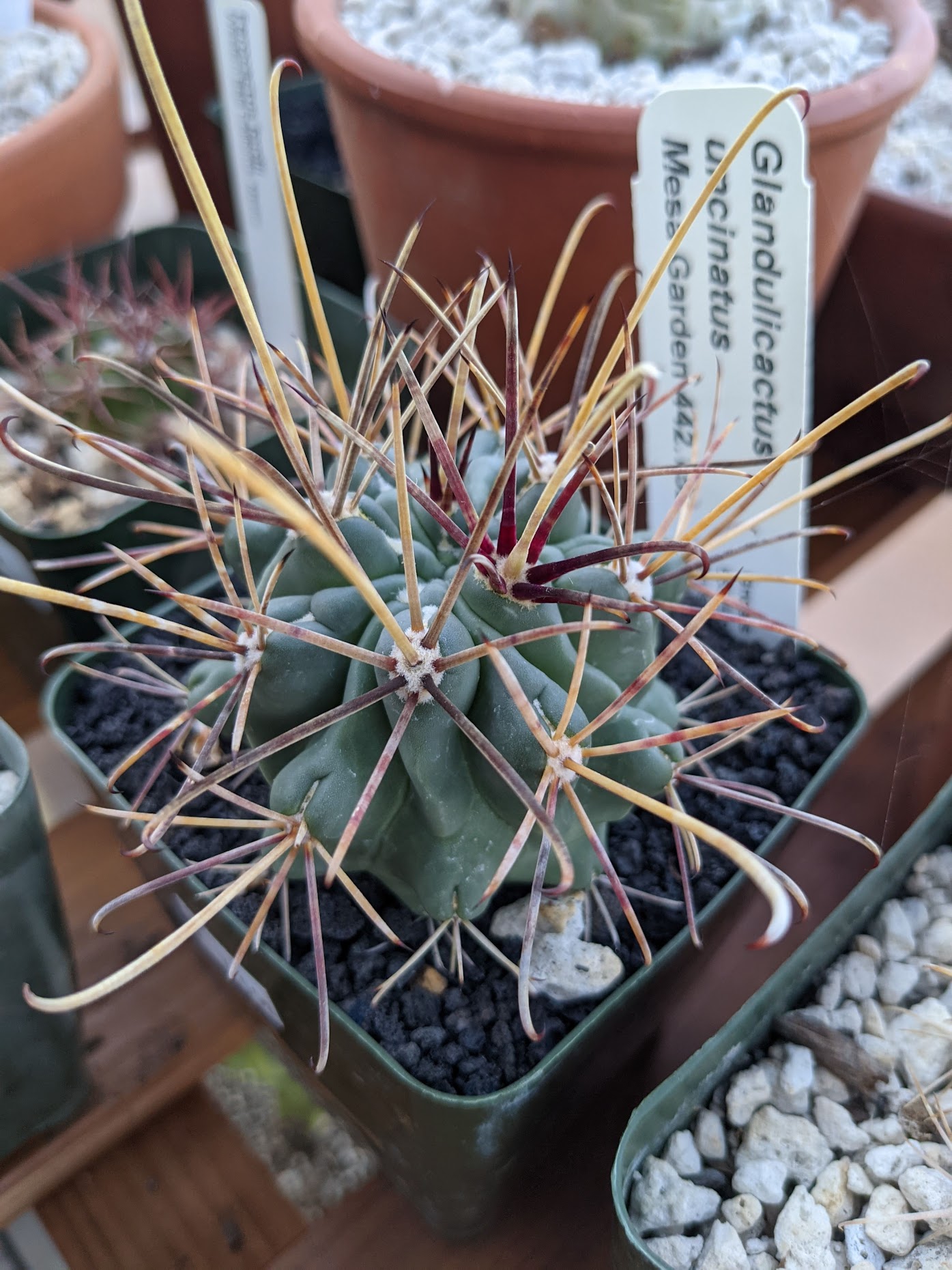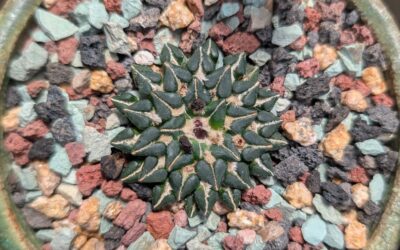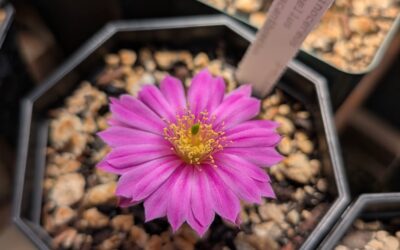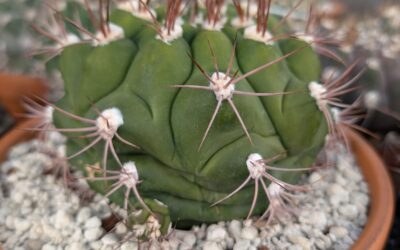This little cactus has the dubious distinction of having a ridiculous number of genera ascribed to it. I recently entered mine in our winter cactus club show & sale, since as a winter bloomer, it’s a fantastic little cactus to show.
Deciding on the category took some time, however, until I looked up all the potential synonyms for the genus:
- Ancistrocactus
- Echinocactus
- Echinomastus
- Ferocactus
- Hamatocactus
- Thelocactus
If I had to choose, I’d say this looks like a mix of Ferocactus and Thelocactus, but that’s not exactly an option. Regardless of the genus this sits in, it’s a delightful little cactus that is surprisingly uncommon in cultivation.
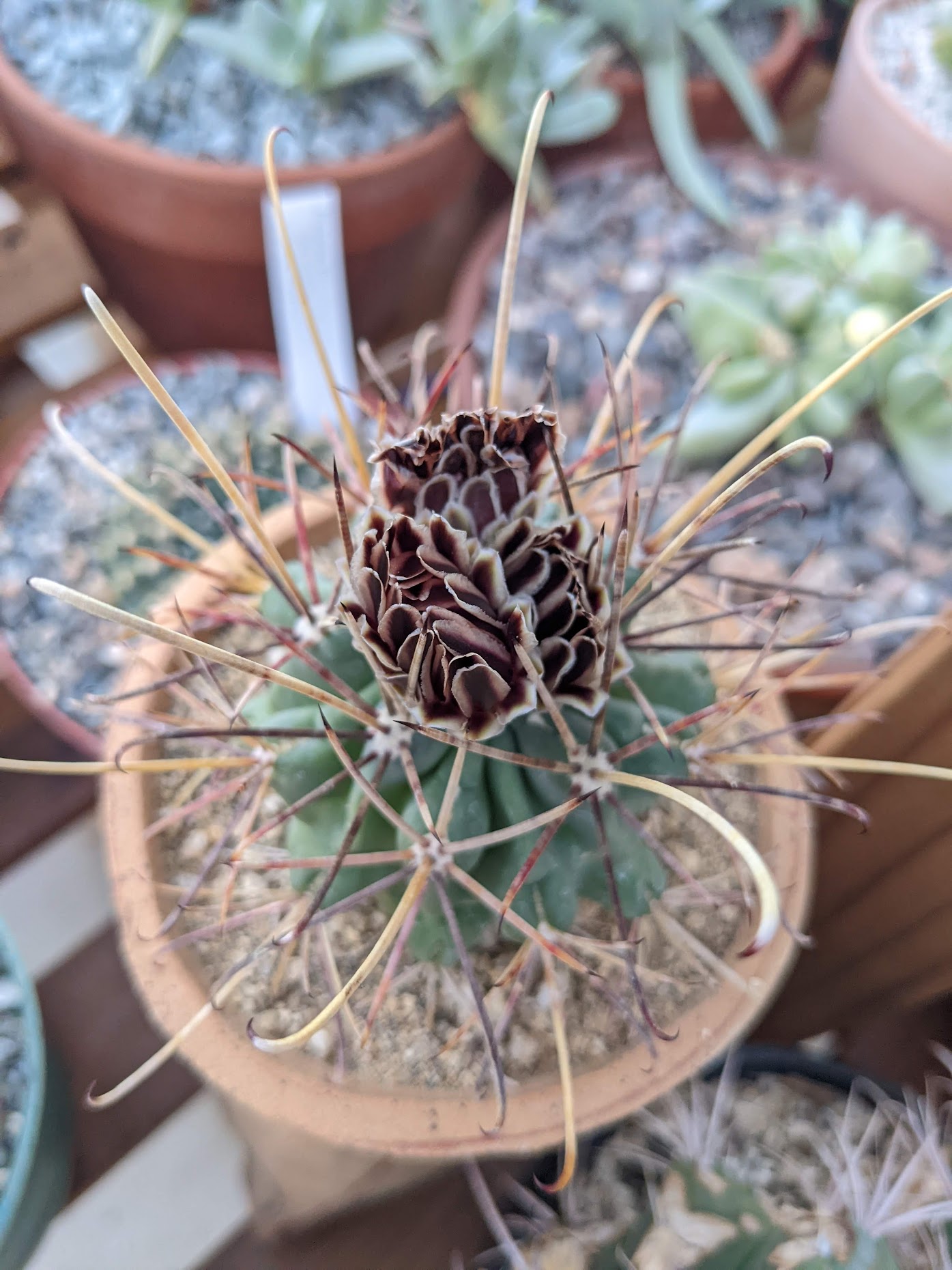
A reliable winter bloomer
I first took this cactus home in spring of 2021, and it’s bloomed each year since. Both this year and the year prior, it started producing flower buds in January, and was in full bloom by February.
Average temperatures have been in the high 20s, low 30s occasionally, even in my greenhouse (since it has no extra heat). In winter, I provide very minimal extra water, waiting until I see distinct wrinkling from dehydration before splashing the pot.
Daytime temperatures occasionally reach 80F in the greenhouse, which may be the reason I see such reliable late-winter flowers.
Size and Description
These are a small, compact growing cactus that do well in container cultivation for a grower that is patient and can resist the urge to water regularly.
Mature plants can grow up to 8″ tall, but take quite a bit of time to get there. Mine is about the maximum width they grow to be, just over 3″.
Each areole produces 7 or 8 reddish-pink spines radially, and 1 long, hooked spine from the center.
They are native to northern Mexico and southern Texas, sharing much of the same regions as the Astrophytum genus. This means the deserts of Chihuahua, Coahuila, Durango, Nuevo Leon, San Luis Potosi, Sonora, and Zacatecas.
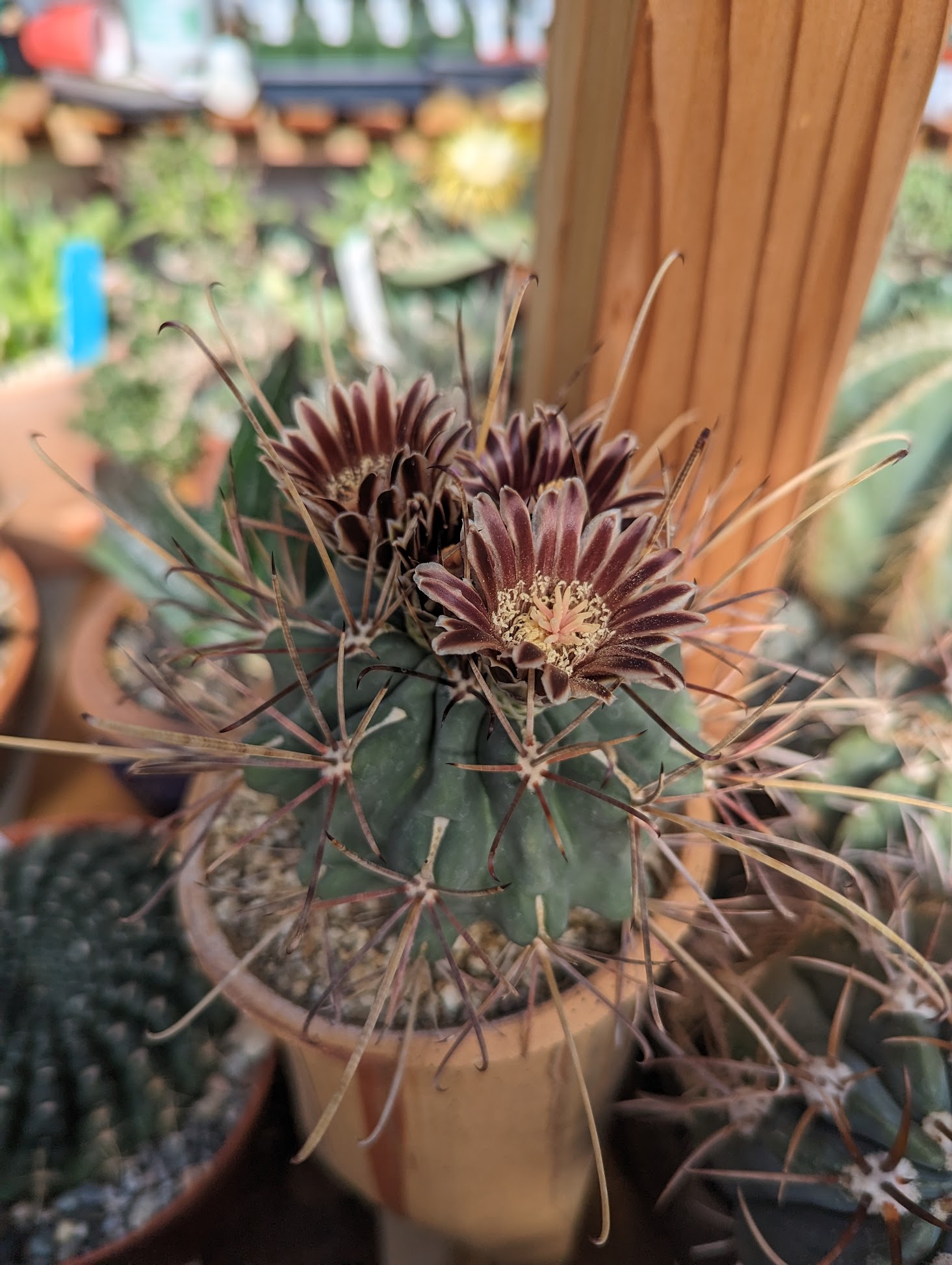
Soil
These grow best in a very well-draining soil mix (shocker, I know). Mine, in its show pot, is in about 50% pumice mixed with 50% cactus soil, and topped with decomposed granite.
I chose a tall pot for this cactus specifically to offer an alternative way for the extensive root system to grow, but still present well. Since the pot is so tall, I needed to ensure it didn’t get overly compacted or blocked over time, hence the significant addition of pumice.
Care
Water
When it’s cold at night (like now), keep these cacti completely dry. This should start as nights drop below 50F, and if kept dry, they are extremely cold hardy: mine has tolerated high 20s with zero fuss, and internet sources say they are perfectly fine down to -12F. I don’t experience temperatures that cold, ever, so I can’t speak to the accuracy there – but in theory, it’s possible.
In summer, nothing seems to phase this cactus. I water once a week when temperatures during the day are 90 – 100 in the greenhouse, and more often if it’s regularly above 100 (as it typically is in July & August).
I use a 1:1:1 balanced fertilizer at half strength once or twice a month during the growing season (nights above 50F), and none at all if I need to water when there’s risk of cooler nights.
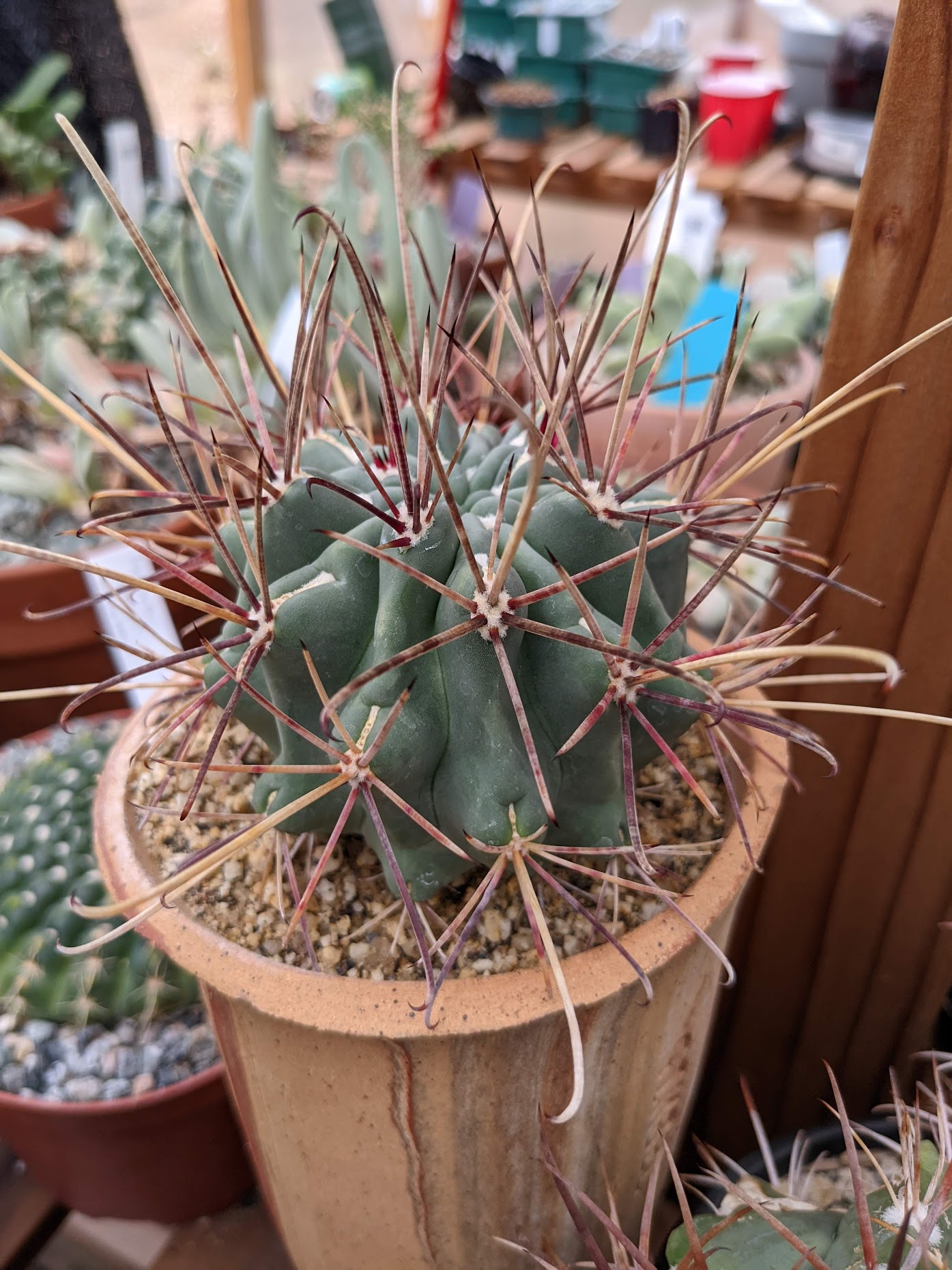
Temperatures and impact on water needs
You’ll get the best growth and spine appearance from nearly full sun exposure and plentiful heat. I keep mine in the sunniest area of my greenhouse, where it’s hot and often experiences direct sun late in the afternoon (thanks to the open greenhouse door).
It is one of my few cacti that is utterly unfazed by extreme summer heat in the greenhouse and water less often than it might like. The most extreme temperatures mine has experienced have been daytime highs of 125 – 130 during heat waves, with most of summer typically reaching 110 – 115 on an average day. I mention this specifically as a benchmark to keep in mind for moisture evaporation and dry soil, and as a consideration for watering frequency.
If I’m watering this plant maybe once a week with temperatures in the 110+ range, where soil dries out almost entirely within a day or two, and it’s thriving, you should bear that in mind for your own plants. They need to get quite dry before being watered again, even in summer months.
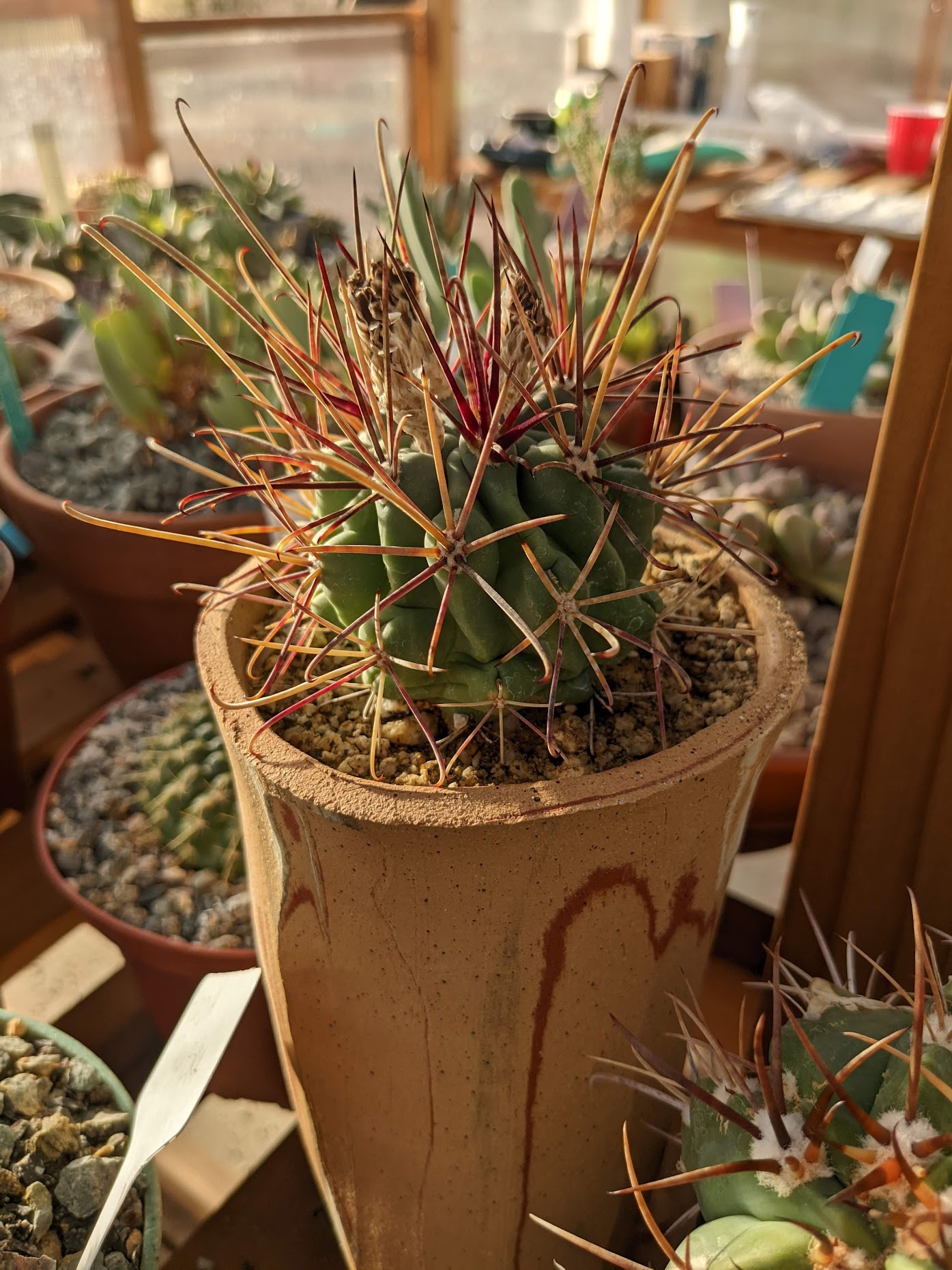
At right is the cactus in November of 2022, still with deep ribs, but plumper and firmer after a summer of regular water and occasional fertilizer.
At left is my cactus in May 2022, near the end of spring. Nights were still too cold to water the plants too often, so if you look closely, it’s distinctly shriveled looking.
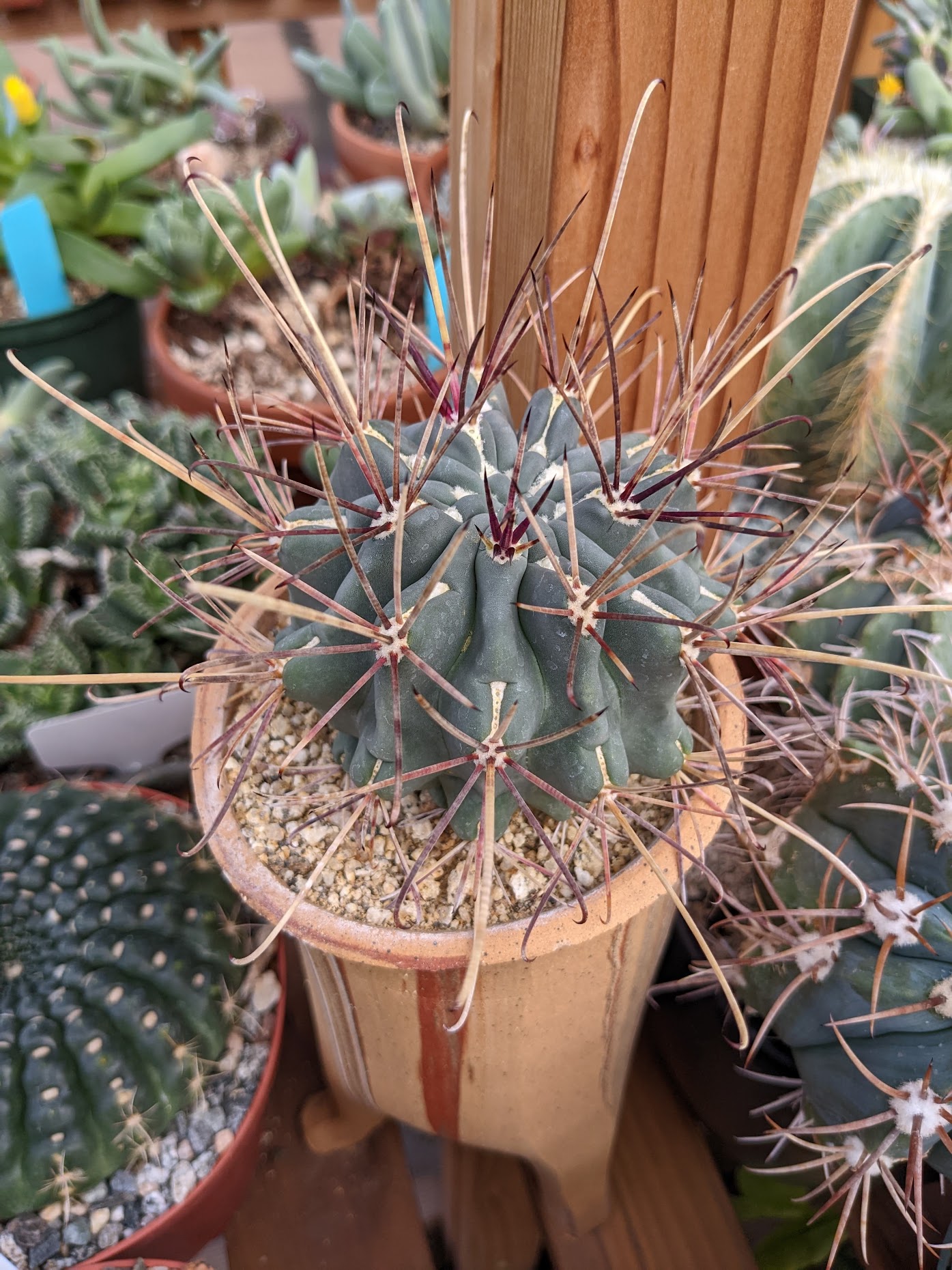
Get one if you can find them!
While relatively easy to grow from seed, they are still quite uncommon to find in cultivation. I was extremely happy to find mine for sale from Gnosis Nursery, but have yet to get any fruit or find seeds available since.
Being in San Diego makes these easy to grow; in more northern latitudes, supplemental lighting is likely needed. In summer months, try your best to keep them nice and toasty without overwatering them.
Enjoyable little cactus and worth a spot on your bench!

